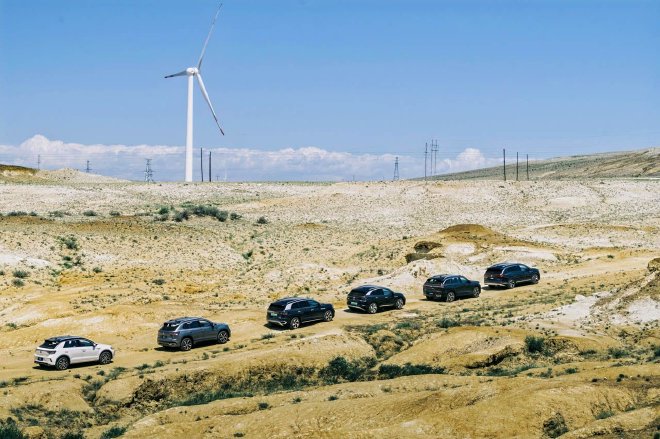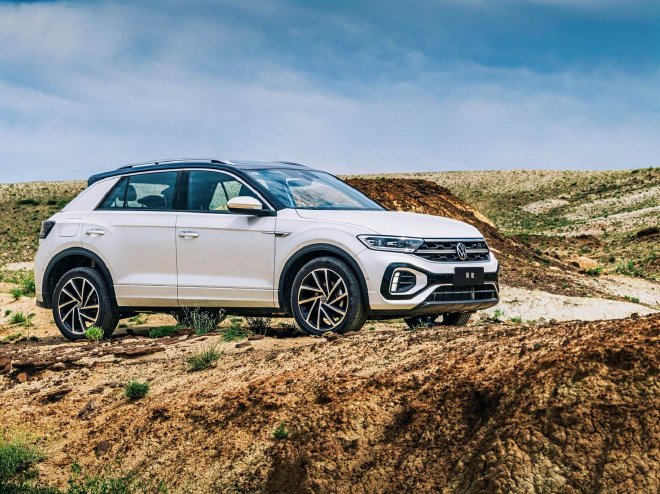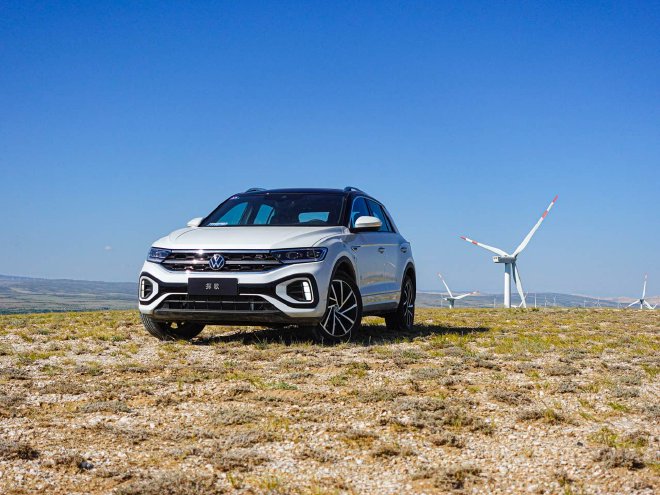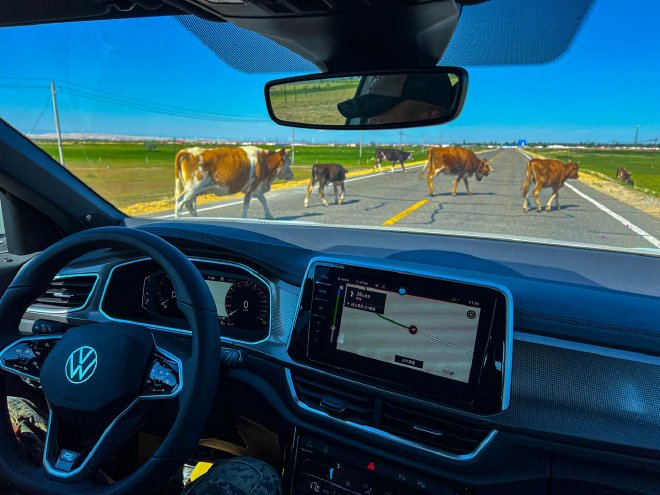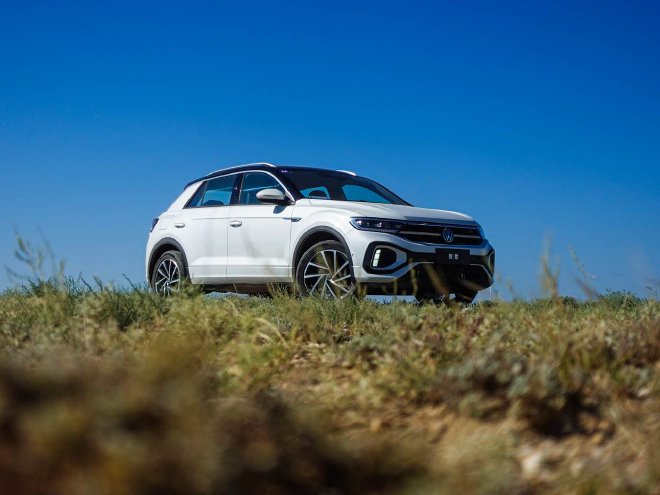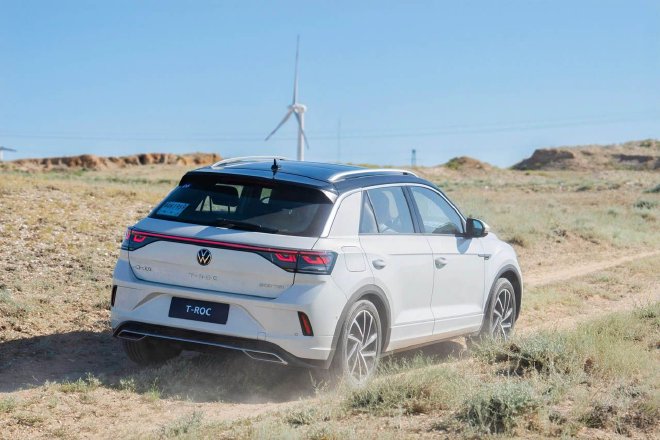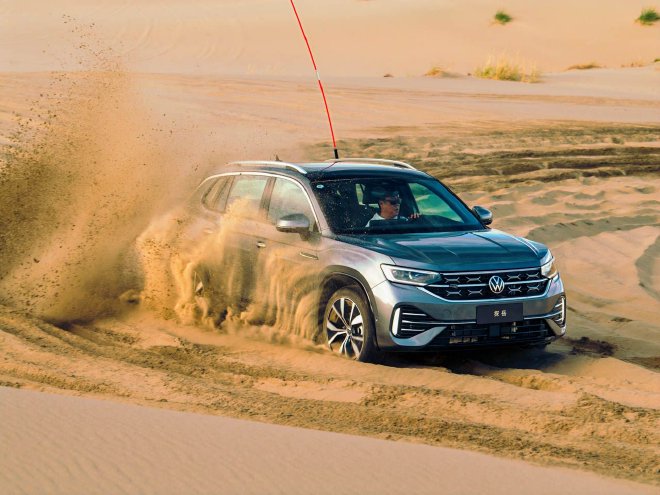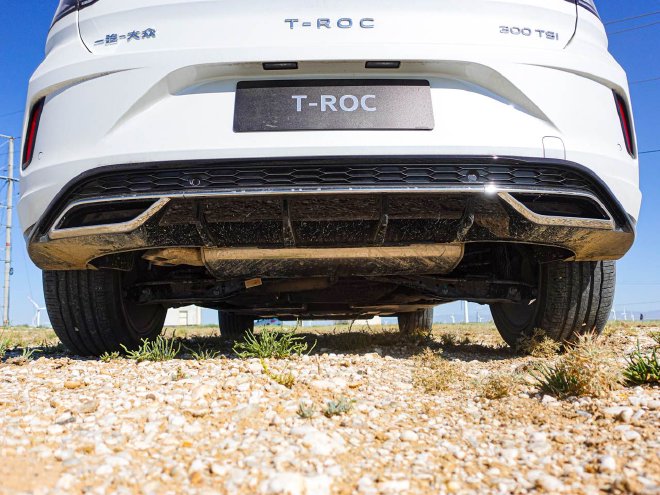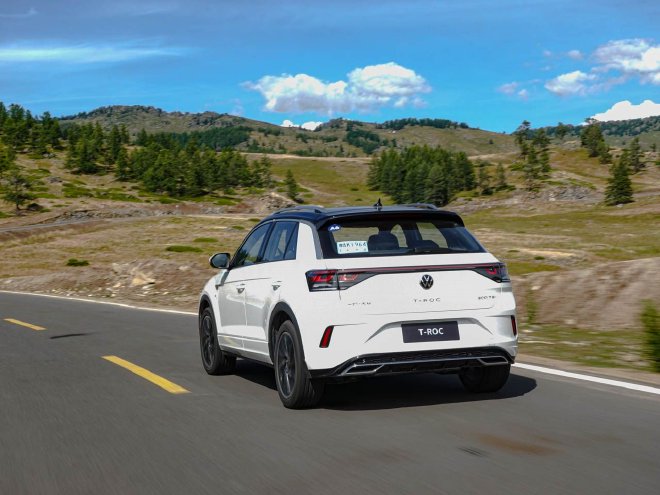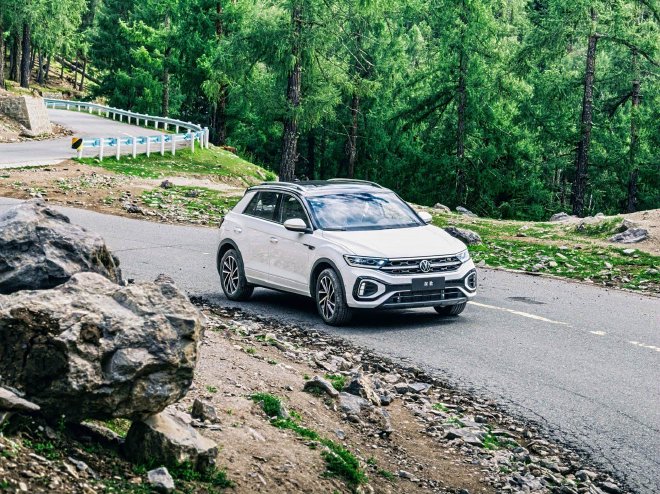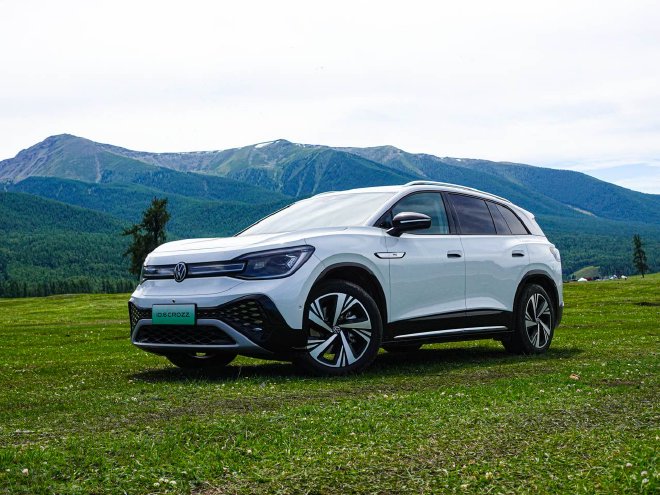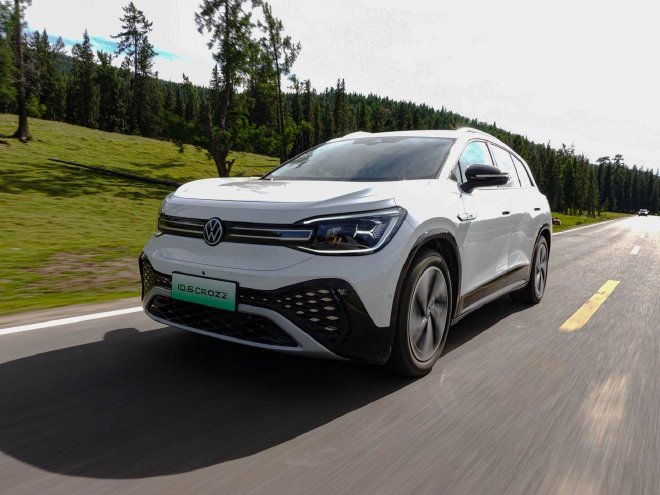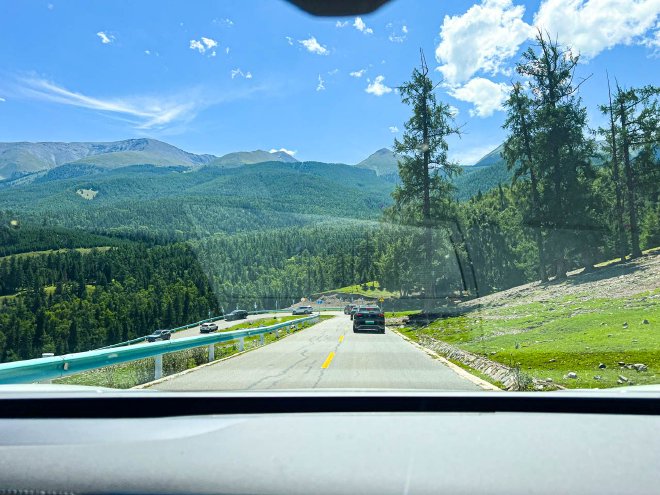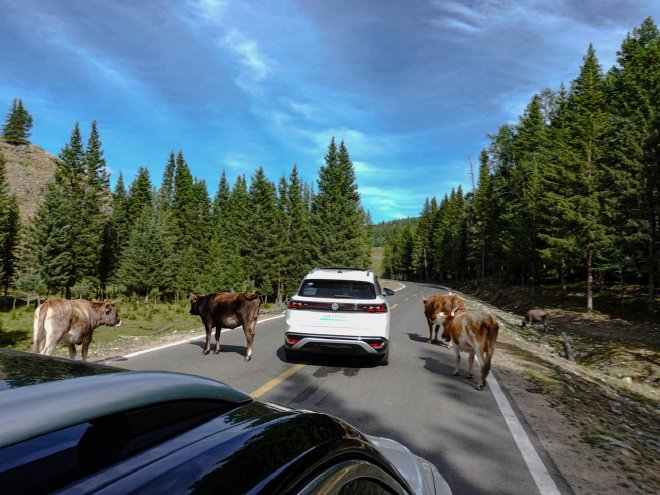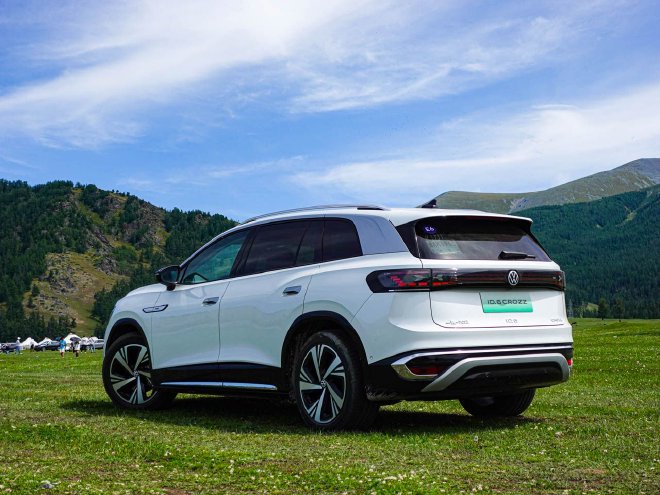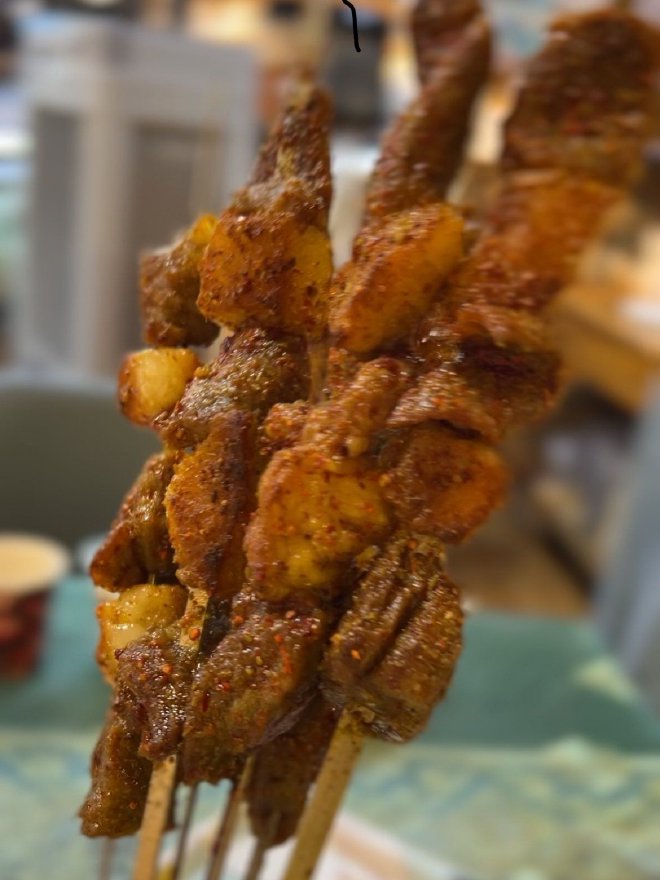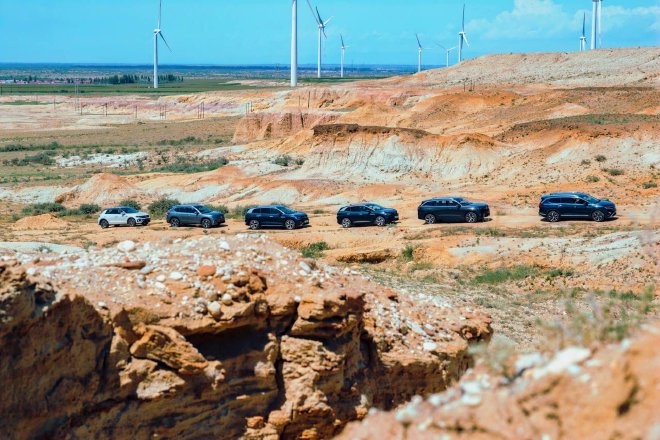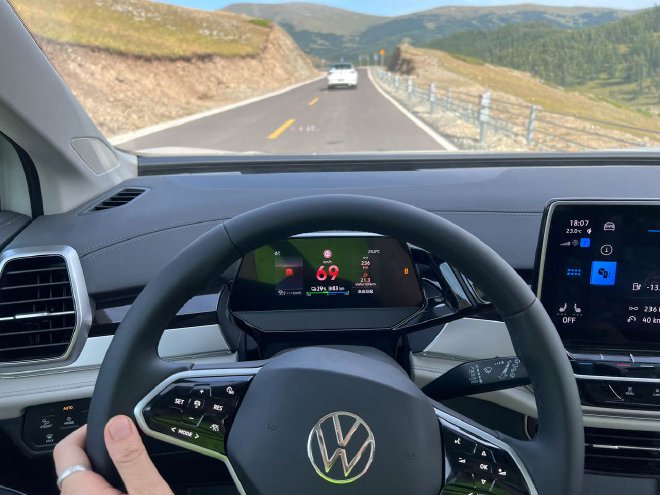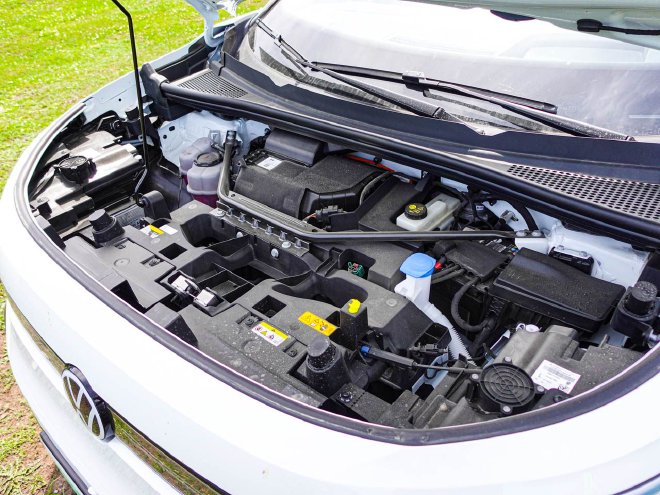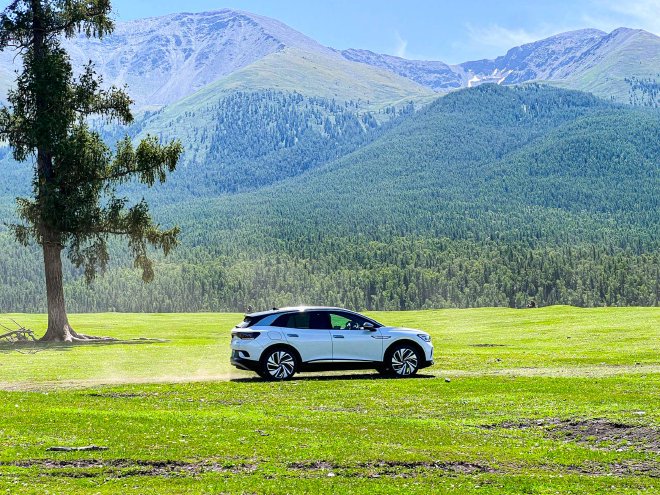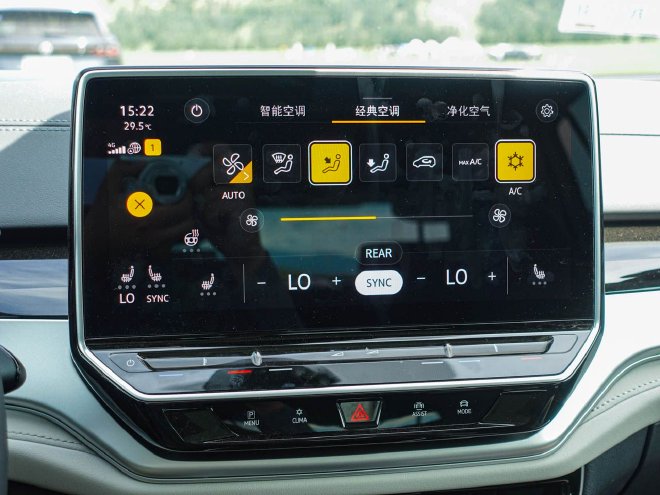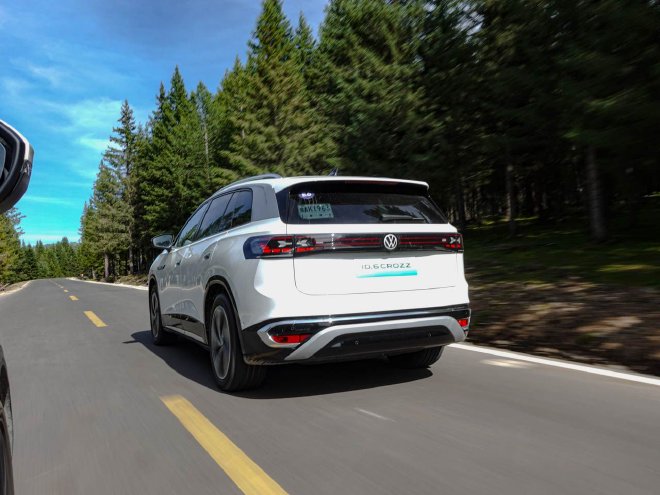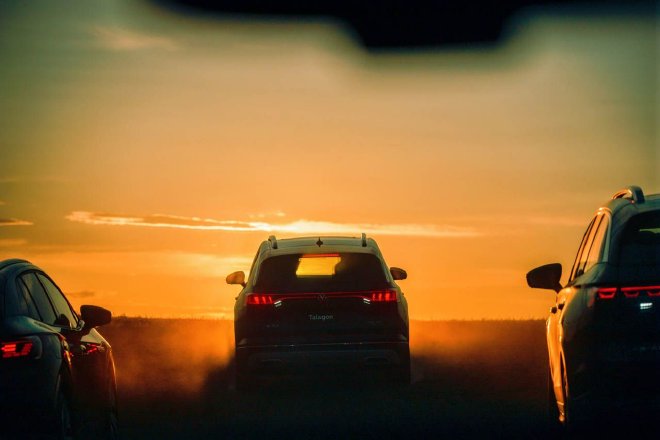July is the perfect time to visit Xinjiang. The weather is pleasant. The roads are in good condition. The TV series “My Altay” is popular online. Many viewers see the stunning scenes of Altay and want to visit the filming locations. Altay offers lush grasslands, blue skies, and a tranquil environment. The winding roads provide beautiful views. But can you visit Altay with a two-wheel drive SUV or a two-wheel drive electric SUV?
Sina Auto accepted an invitation from FAW-Volkswagen. They participated in a crossing event in Altay. The event lasted two days. It featured two different routes. Participants drove vehicles with both gasoline and electric power. The models included the Tanyue and ID.6 Crozz, both with two-wheel drive and pure electric options.
One of the crossover models is the Tanyue. The plot of “My Altay” follows a route through national roads, mountains, forests, grasslands, and wetlands. It consists of National Road G219, Tieja Highway, and Provincial Road S232, forming the Kanas Grand Loop. This route poses no challenge for the Tanyue compact SUV on paved surfaces.
The new Tanyue features a 1.5T Evo2 engine and a 7-speed dual-clutch transmission. It can keep up with the convoy. When it needs to overtake, the driver just floors the accelerator. Overtaking becomes easy.
This golden powertrain offers power control and fuel efficiency. Its compact size suits narrow mountain roads. The lighter weight helps the Tanyue navigate gravel surfaces easily. As a two-wheel-drive vehicle, it feels uncertain on rugged terrain.
On the windmill field’s Gobi desert, the light vehicle moves freely. The stones and ditches do not stop the Tangu from advancing. On the unmarked road, the Tangu maintains stable driving as long as the ditches are not too deep and are carefully observed.
On the Gobi Desert, the new 1.5T Evo2 delivers strong power. This engine features advanced technology. The variable cross-section turbine enhances performance. It balances power output with fuel efficiency.
The 7-speed dual-clutch transmission performs well on paved roads. It also adapts smartly to loose gravel surfaces. It adjusts gears based on the throttle position. When climbing a small ditch, it quickly shifts from 4th to 2nd gear. This raises the RPM and boosts low-speed torque. The vehicle can climb the ditch smoothly.
The road conditions at Baisha Mountain require four-wheel drive. Don’t attempt to use a two-wheel drive vehicle like the Tanyue. If you want to drive in the sand, choose the Tanyue from the FAW-Volkswagen SUV family.
The T-Roc delivers a driving experience similar to the Golf. Its body sits slightly higher than the Golf’s. However, the chassis remains solid. It handles mountain roads well. The car maneuvers effectively through U-turns and hairpin bends. The chassis provides strong dynamic support. After the front exits a turn, the rear follows smoothly. The overall performance feels cohesive.
The front MacPherson and rear multi-link suspension give the T-Roc strong sporty attributes. Unlike some body-on-frame SUVs that feel unstable on highways, the T-Roc’s chassis offers firm yet flexible support. It prevents feelings of dizziness.
On unpaved roads, the T-Roc’s suspension performs well. It rebounds cleanly without excess bounce. The suspension support feels uniform. Drivers receive direct feedback from the road. This boosts their confidence while driving.
I did not expect a compact two-wheel drive vehicle to give drivers great confidence in Altay. I also did not expect this model to handle most road conditions in Altay with ease.
The Tang Song offers satisfying power output. It also features low fuel consumption with a small engine. This model showcases Volkswagen Group’s leadership in internal combustion engines. It focuses on providing consumers with cost-effective and efficient travel options.
Crossing Vehicle II – ID.6 CROZZ The next day’s total distance will be nearly 400 kilometers. We initially thought the ID.6 CROZZ, with a CLTC range of 601 km, could easily handle the round trip. So, we drove aggressively at first. We floored the accelerator to overtake, pressed the pedal hard to follow, and braked without hesitation. However, we overlooked the nearly 1500-meter elevation, the impact of our driving style, the air conditioning, charging, and listening to music on battery consumption. We also didn’t account for the energy used by the air conditioning during static shooting.
The driver used the “floor oil” method. From the start, they adjusted the driving mode. They drove in B mode for strong energy recovery. After each hard acceleration, they maximized energy recovery during coasting, descending, and braking.
In high-speed mode, the ID.6 CROZZ can instantly reach 120 km/h. It maintains moderate energy consumption. The PRO version features a single motor system with a maximum power of 150 kW and a peak torque of 310 Nm. The motor delivers 204 ps. This performance meets the daily driving needs of a large, seven-seat electric SUV.
What about crossing? Can the ID.6 CROZZ handle nearly 400 km of varied conditions?
In the strong energy recovery driving mode, drivers experience a “single pedal” feel. The drag force remains comfortable. Light braking and tracking braking provide a smooth experience.
The advantage of strong energy recovery lies in predicting traffic conditions ahead. This allows the vehicle to use kinetic energy for braking. It maintains distance between vehicles and reduces unnecessary braking. At the same time, it ensures efficient energy recovery. This process recycles energy effectively, preventing rapid depletion of range.
The B mode of the CROZZ provides energy recovery of up to -0.25g. It switches between positive and negative torque smoothly during driving.
This also covered nearly 400 kilometers. The passengers did not feel dizzy. The effective energy recovery provided a win-win performance during the drive.
When the car stops at the designated grassland ranch, the scene refreshes the body and mind. Against the backdrop of green grass, blue sky, and white clouds, our white ID.6 CROZZ looks especially pure. The electric vehicle blends seamlessly with nature. Driving an electric car to the grassland embodies an eco-friendly journey.
Mental satisfaction cannot replace the joy of taste. When in Xinjiang, you must eat lamb skewers and all the delicious food.
After eating, we return via the 54-kilometer Tiejia Highway. This road just opened. It has no mobile signal. We must set up navigation beforehand. Offline maps would help.
After driving about 20 kilometers, our ID.6 CROZZ has 29% battery left. Based on this morning’s driving habits, it can only go another 83 kilometers. However, the distance to the campsite exceeds 100 kilometers. This shows how “aggressive” the morning driving style was.
At this time, range anxiety exists. This reflects the true technology of electric vehicles. It involves driving skills and the vehicle’s battery management capabilities.
The ID.6 CROZZ PRO version features an 84.8 kWh battery pack. Its high energy density of 175 Wh/kg provides longer and more realistic range with limited battery capacity. The vehicle includes CO2 heat pump air conditioning technology. This technology significantly reduces energy consumption and supports range capability. Most importantly, the ID.6 CROZZ employs a lean Battery Management System (BMS). This system ensures comprehensive energy savings, enhances energy recovery, accurately controls power consumption, and improves energy efficiency. These features maximize energy utilization and achieve precise range performance.
We must change our driving style to reduce energy consumption. The ID.6 CROZZ has a drag coefficient of 0.28. It quickly regains power on the downhill route, visibly increasing its range. The return trip is interesting. We see different scenery and try to recover all usable energy. This challenge is enjoyable. However, driving slowly doesn’t mean we can’t overtake. Following slow vehicles can hinder energy recovery. Increasing speed while using inertia and minimal energy output to climb is a smart choice.
The moment the vehicle enters the highway, it completes the journey. The distance to the campsite is only 16 kilometers. With 29% battery left, the driver can press the accelerator hard for this short trip.
We kept the air conditioning on all day. We set the temperature low and increased the airflow. Xinjiang’s weather felt nice and cool. However, the strong sunlight made it bright. Opening the windows increased wind resistance while driving.
I got on the highway and activated the assisted driving. The ID.6 CROZZ features IQ. Drive, providing L2+ level automated driving assistance. On highways with gentle curves and traffic, it reduces the stress of driving on mountain roads all day.
After arriving at the campsite, the ID.6 CROZZ had 16% battery left. We visited the local street market before reaching the campsite. We bought some local specialties.
The ID.6 CROZZ delivers accurate range throughout the journey. We confidently go shopping. After navigating tough road conditions, this car earns the driver’s trust. It excels in range, chassis control, and electronic functions. The comfortable seats with massage features enhance the experience.

